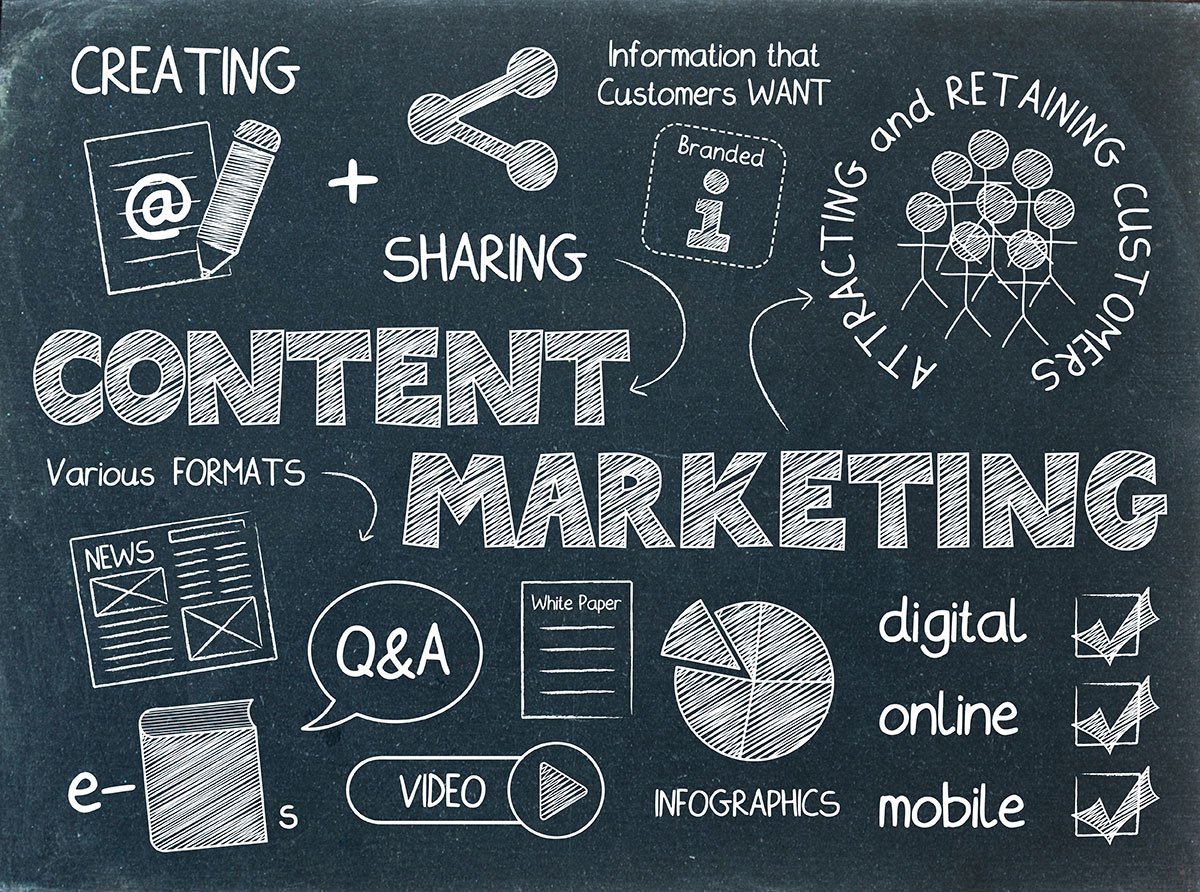Popular Marketing Channels And When To Use Them
Below is a list of ways that products and services can be ‘put to market’. In the final analysis, that’s all marketing actually is.

| Marketing Channel | What It Is And When To Use It |
| Advertorials, Endorsements, Spokespeople, Paid Promotions, Sponsored Content, Influencer Marketing | These are effectively paying people to say nice things about your product or service. They aren’t aligned with Web 2.0 Marketing because social currency isn’t accrued or easily conferred through such means. |
| Affiliate | Affiliate marketing is providing a financial incentive for people to refer sales from their platforms, sites, or other digital assets. It’s can be a good option for differentiated or innovative ecommerce products, or superior products in competitive markets, where vendors want to keep costs low. |
| Broadcast – Radio, Film, TV | These are broadcast, or mass media marketing modalities. They are one-way and not aligned with the user-generated aspects of Web 2.0 marketing. But don’t be fooled – tv ads are more targeted than ever, with lots being known about the demographics that watch certain shows at certain times. For our money, we prefer video platform ads (YouTube) ,which have a lower cost, and more immediate and accurate performance analytics. |
| Channel Partnerships | This is a mutual referral relationship between a vendor and another company whose offerings can compliment them. So, a website designer might have marketing channel partners – since each company’s clients will likely need the other service. Depending on the vertical, these can be as simple as mutual links to the others’ websites; or they can be complex and based on traffic or sales. Channel partners come at no brand cost, if done correctly and can provide a lot of value for little money. They should almost always be explored, especially for new companies with limited budgets. |
| Content Marketing | This is marketing with content that ‘pulls’ traffic and leads, versus ‘pushing’ ads in front of the public. It’s inbound vs. outbound marketing, which is a term Hubspot. coined. It is suitable any time people might use the Internet (not necessarily Google Maps) to find you. Exceptions would be brick-and-mortar franchises that are not differentiated (Starbucks or Subway), where the brand is already recognized (Sears), where appeal relies somewhat on proximity, and where the pain point is urgent (dental emergency). |
| Contests, Charity, Prizes, Donations | These are self-explanatory. These spread the word with a kind of bait-and-switch: people sign up for a chance to win, say, a new Ford – which gets advertised in the process. This practice is off-label for prestige brands, and perhaps better for local events and fundraisers than anything national. |
| Desktop or Mobile Application (In-App Or In-Game Ads) | This is just what it sounds like. It’s – by definition – a form of interruption marketing, and we’re not fans. |
| Direct Mail | These are basically notices and flyers sent through the Postal Service. These can be effective, if you have an offer (that isn’t just a sale), and an offer ladder (a ‘free’ inspection from a mechanic, or ‘free’ cleaning from a dentist’s office provide diagnostic insight into pain points, and help re-engage customers later). |
| Display And Banner Ads | These are literally exactly what they sound like: visual ads you pay to have shown to in-audience users. One good thing about display is that an extraordinary amount of behavioral, signal, and history data go into determining when and where your ads show up. They are well-targeted by ad platforms (managed or manually-placed ads notwithstanding). There are many types of display advertising, from managed, to the use of ad networks and programmatic platforms. We prefer to couple valuable offers with display ads. |
| Email is simply an extension of the web experience – done more personally, and with more information about a given user. Good to use when you have offers of content that have objective value. Never buy email lead lists. Hubspot provides great information on how to build them. Email is interruptive. Use it it only when you have great, high-value, offers, never to ‘drip market’ or talk about yourself. | |
| Events, Forums, Seminars, Exhibitions, Conventions | These are offline gatherings, which can vary from high-pressure sales sessions, to informative dialogues between a vendor and their audience. Events can be a fun way to engage fans and generate enthusiasm. Event marketing is not cheap, and requires planning. |
| Native Advertising | This is ‘content’ that’s biased, meant to look like objective or objective-value content. It’s not entirely honest, and we aren’t fans at FlashPointLabs. |
| Loyalty or Referral Program | This is marketing where your existing clients get a benefit from you for referring your product or service. This is a kind of currency – that benefit – that runs counter to social currency, and we prefer to avoid that. It incentivizes your customers exploiting or using their social network. That said, if your product truly is great, it doesn’t have to be represent a conflict of interest. However, in that instance, your customer benefits from social currency for the recommendation. |
| Offline Billboards, Signage | A sign with your message, at your place of business, is always a good idea. Billboards can help generate buzz, but come at a great cost. This is really to be considered on a case-by-case basis. |
| Organic Social Media | This is posts on your business’ ‘wall’ on Facebook, or through your Twitter account. We use social as an effective funnel top and try to create content and offers that promote people voluntarily sharing it. The key is to have great offers and keep it authentic. Hubspot calls this the ‘cocktail rule’ – never talk about yourself. |
| Outside Sales (Cold Calls) | This is what it sounds like. The age of the Internet has more or less killed this. It’s time-consuming, expensive, and requires personnel. It also doesn’t perform well next to other marketing practices, and can be demoralizing to your sales team. There are ways to generate content to enable your sales team, to build lead scoring models, and to place calls when they’re likely to close. |
| Paid Social Media | These are posts that are fed to the view of people in your audience, by algorithms on Google or Facebook or Twitter or LinkedIn, and they can be highly effective. They can be interruptive, or contain offers of valuable content, and be welcome. It’s really about how they’re executed. |
| Public Relations Stunts, Culture Jamming, Viral Content | These are basically using the publics ‘morbid curiosity’ or interest in gossip, humor, the inane, or the unusual, to spread the word. These tactics can be highly effective, especially if the product captures imagination, or the founders are ‘colorful’ and confident. While not appropriate for every brand, this approach carries risk if it’s not properly executed. |
| Press Release | This is an announcement to the press that you’ve done something. It can be appropriate when you’ve actually done something amazing. and therefore news-worthy. more and more press releases can be purchased (through platforms like PR Newswire and others), and depending on your current visibility, that may make sense. The determinitive factor with press releases is that your company did something amazing. |
| Print Advertising | Ads in newspapers, readers, magazines or other periodicals. This can be very process-involved an expensive. Note: we’re not discussing brochures, which are informational and for the benefit of those already somewhat interested in your product or service offering. Print is making a bit of a comeback as people tire of computer screens, and appeals more to an older demographic. Depending on cost, visibility, the offer involved, and the demographic, print can be viable marketing channel. Print can be combined with offers and perform well. |
| Professional Networking Events | This is basically referral-sharing for professionals. It goes against the notion of Web 2.0 marketing and social currency inasmuch as people are recommending you because you’re in their group, versus offering a great product or service. |
| Relationship Marketing, Word Of Mouth | This is mentioning what you do when you meet people. New businesses should network in less obvious ways, like golfing, on planes and at airports, on vacations, or at parties. This happens organically, out of a conversation, and should happen after you’ve been listening, and your service provision is relevant and potentially helpful to them. Not just new clients, but new hires often emerge from old fashioned networking or speaking. |
| Remarketing | This is showing ads across websites, based on tracking cookies and some signal of interest in a product or service. If you absolutely , positively, have to hit some traffic or sales numbers, and you have an offer, you might try this. It really isn an example of ‘interruption marketing’, and should be viewed as it was when it first emerged: as stalky. |
| Search Engine Marketing (SEM) | This is the paid results on the SERP (Search Engine Results Page) that appear before organic results. it is high-visibility, and high cost. And it’s becoming well-known that Google and others favor your SEO when you pay them for SEM. This can be appropriate when paired with content offers, for verticals where content applies. In other words, paid search is a ‘funnel top’ – an attention market. It’s interruptive, as all paid placements are. So, make it worth people’s while and include an offer. These don’t convert great, but do much better – as all marekting does – with offers instead of asks. |
| SMS, Push Notifications | This is when text messages are sent, often with an ask. These are often used in political campaigns. They can be indicated if your audience is loyal, and/or critical when news updates that could impact your audience are breaking or have broken and when time is of the essence. Gathering the telephone numbers to send SMS notifications can be tricky. That said, the way it’s often practiced is hugely disruptive, and is the definition of ‘interruption marketing’. |
| Street Samples And Trials | This is giving away a slice of the pepepred ham or cupcake to passers-by. This is great for brick-and-mortar, largely food service, businesses to execute at farmer markets, seasonal fairs, and other businesses with foot-traffic. |
| Swag, T-Shirts, Hats, Stickers, Mugs (Give-Aways) | Giving away valuable branded products seldom has a positive, measurable, ROI. This is a good way to be remembered after an convention or event, and is indicated cool or well-branded products. Virtually every startup gets t-shirts that become mementos or bragging fodder some time later on – though we’d doubt they resulted in sales. |
| Website (SEO, Search, Content) | A website is at least a validator. But at most it can be helpful, as described in They Ask, You Answer. Some web presence is almost always appropriate; if it’s a gas station you have, Google My Business or off-page SEO, alone, is appropriate. In many cases, we’d advise both. Your website, in most cases, is where your email, content, funnel tops, messaging, contact – all converge. It’s your face. We also advise that you make your website as professional as you can afford, as people will invariably go to the best, and the wins in marketing are not distributed evenly. |
In basic terms, marketing is the process of identifying customer needs and determining how best to meet those needs. In contrast, advertising is the exercise of promoting a company and its products or services through paid channels. In other words, advertising is a component of marketing. ~ AMA





